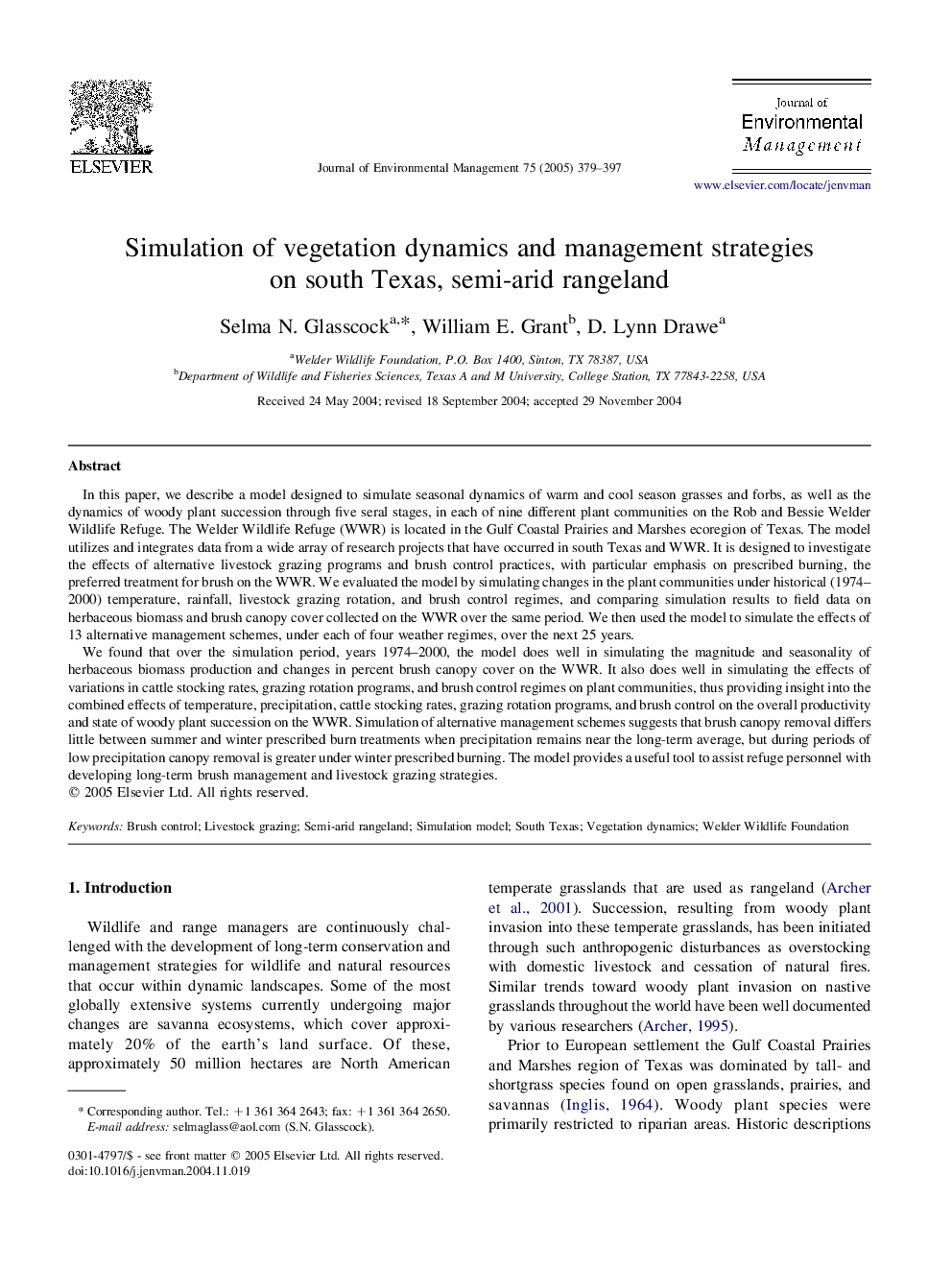| Article ID | Journal | Published Year | Pages | File Type |
|---|---|---|---|---|
| 10505897 | Journal of Environmental Management | 2005 | 19 Pages |
Abstract
We found that over the simulation period, years 1974-2000, the model does well in simulating the magnitude and seasonality of herbaceous biomass production and changes in percent brush canopy cover on the WWR. It also does well in simulating the effects of variations in cattle stocking rates, grazing rotation programs, and brush control regimes on plant communities, thus providing insight into the combined effects of temperature, precipitation, cattle stocking rates, grazing rotation programs, and brush control on the overall productivity and state of woody plant succession on the WWR. Simulation of alternative management schemes suggests that brush canopy removal differs little between summer and winter prescribed burn treatments when precipitation remains near the long-term average, but during periods of low precipitation canopy removal is greater under winter prescribed burning. The model provides a useful tool to assist refuge personnel with developing long-term brush management and livestock grazing strategies.
Keywords
Related Topics
Physical Sciences and Engineering
Energy
Renewable Energy, Sustainability and the Environment
Authors
Selma N. Glasscock, William E. Grant, D. Lynn Drawe,
